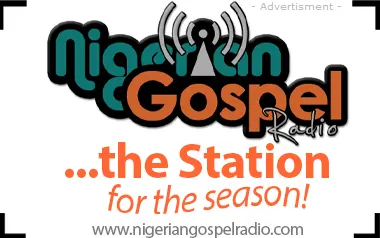The authenticity of a document or certificate determines the value attached to it. It also gives confidence and assurance to its owner, who must have gone through a legal process to acquire it.
However, some criminally-minded individuals, who lack the patience of running the full legal course of acquiring certificates but seek the benefits attached to possessing them, have devised dubious means to cheat the system.
This has resulted in forgeries of different shades.
“Anything can be forged, even a court document,” a lawyer and human rights activist, Librous Oshoma, said when asked to comment on the ease of getting fake documents, even one as sensitive as a death certificate.
Indeed, a few years back, a street on the Lagos Island area of Lagos State, popularly called Oluwole, was known as the production and sale hub of fake documents.
This place, before it was shut down, was a reference point to crooked persons seeking illegal documents.
Despite technological advancements and security measures embedded in some certificates, issues of forged documents are still on the rise.
Recently, controversies trailed the Unified Tertiary Matriculation Examination results of a student, Ejikeme Mmesoma, who was accused of changing her score from 249 to 362.
In 2019, during a verification exercise of its professors, the Nigerian University Commission said it discovered 721 forged certificates.
The Kwara State Government in 2017 also discovered 67 military recruits with fake certificates of origin.
Several times, job applicants and recent graduates have been found with forged certificates by their employers or at the registration point of the National Youth Service Corps.
In 2019, the Nigeria Security and Civil Defence Corps paraded eight computer operators in Maiduguri, Borno State, for allegedly issuing fake degree certificates, “doctoring admission letters, certificates, ID cards, tuition fee receipts, stamps and official seals of various tertiary institutions around the Northeast, including the University of Maiduguri for as cheap as N2,000.”
According to media reports, the then NSCDC state commandant, Abdullahi Ibrahim, stated that the beneficiaries of the doctored certificates worked with international and local non-governmental organisations.
One of the suspects reportedly said they had copies of several institutions’ admission letters and certificates, which they cloned.
Section 467 of the Criminal Code Act of Nigeria prescribes three years imprisonment for persons who forge any document, writing or seal.
A verification knowledge hub, The Sumsuber, reported that identity cards, passports and driving licences were the most forged documents in 2022, with Nigeria contributing 2.7 per cent of ID card fraud.
Another report showed that passports, driving licences, account numbers and signatures on checks, contracts, invoices, birth certificates and ID cards were the most forged documents.
Sumsuber defined forgery as a criminal act that involved fabricating and falsifying documents or other objects to deceive and make a profit.
It further reported that more than 50 per cent of the fraud detected worldwide was done in Bangladesh, Pakistan, Vietnam, Nigeria and the United States of America.
Low document security, legal loopholes and low privacy awareness were the factors that enabled document falsification and fabrication.
One of the simple ways to detect a fake document is to look out for missing or altered numbers, errors in the data or misspelt names, altered texts or images, unusual formatting and mismatched logos and addresses.
A lead technical consultant and UI/UX designer, Mr ‘Seyi Adebowale, said employers and individuals could verify the legitimacy of their certificates by contacting the granting organisation directly.
He added, “One can also verify on their official website to make sure they (the information) correspond to the information on the certificate.”
Authentic certificates and high-level documents usually have special security features such as holograms, watermarks, security threads, and micro-printing, among others.
Facial biometrics is another way to confirm if the identity of a passport or ID card holder is the same as the captured data.
This system analyses the facial features of the applicant and when scanned during verification helps to confirm the true holder.
It is advisable to introduce a document screening system that can detect document security features and signs of subtle editing.
However, not all documents, certificates and ID cards have security features.
It is therefore pertinent for organisations to invest in additional layers of protection for documents they issue.
The ultraviolet light helps to identify hidden security features that may be present on genuine certificates.
When UV light is focused on a banknote, certificate or document, it makes the hidden security threads or stripes glow.
Knowledge of where the thread or stripes are and the proper wavelength of UV light is needed to ensure a successful detection process.
Degree certificates come with official seals and stamps, which may be embossed, stamped or raised.
Adebowale advised issuing firms to ensure that the signatures and seals on the certificates were clear, distinct, and correspond to those of the authorised personnel.
According to him, authentic documents are typically produced with high-quality printing techniques.
“Look for signs of poor printing such as blurred text or images, irregular ink distribution, or visible pixels,” he added.
The technical consultant said comparing the writing style on the certificate with other legitimate documents from the issuing institution was another way to check a document’s authenticity.
Adebowale said, “Also, check for the consistency and variety of fonts. When more than four font styles are used, it raises the flag for multiple checks.”
“Search for indications of manipulation such as dates, names, or other specifics that have been changed or eliminated,” Adebowale advised.
Forgers, to make their documents appear real, might tweak a few details such as the spelling of the institution name and/or a few letters in the address that might miss the eye at first glance.
It is important to crosscheck the names, addresses, time zones and spellings on a document or certificate.
Also, background checks should be done on the individual or organisation issuing the certificate to ensure that they are authentic.











